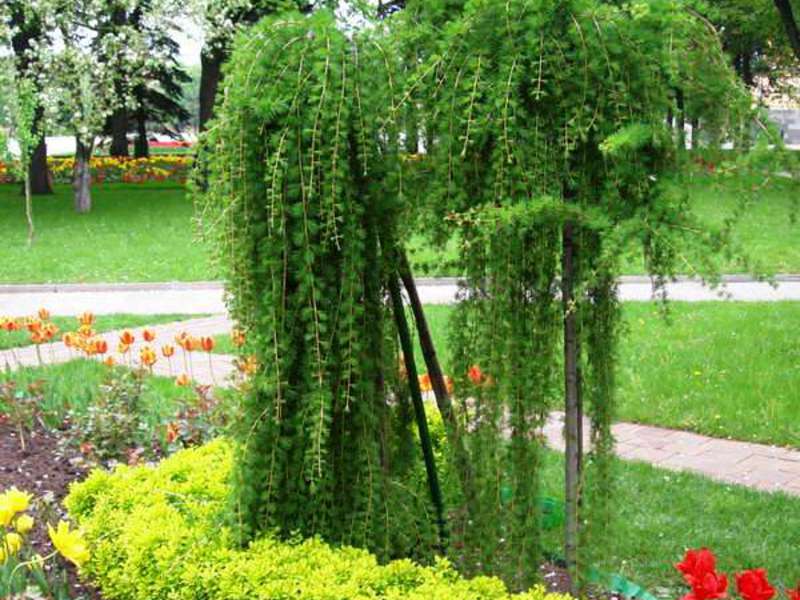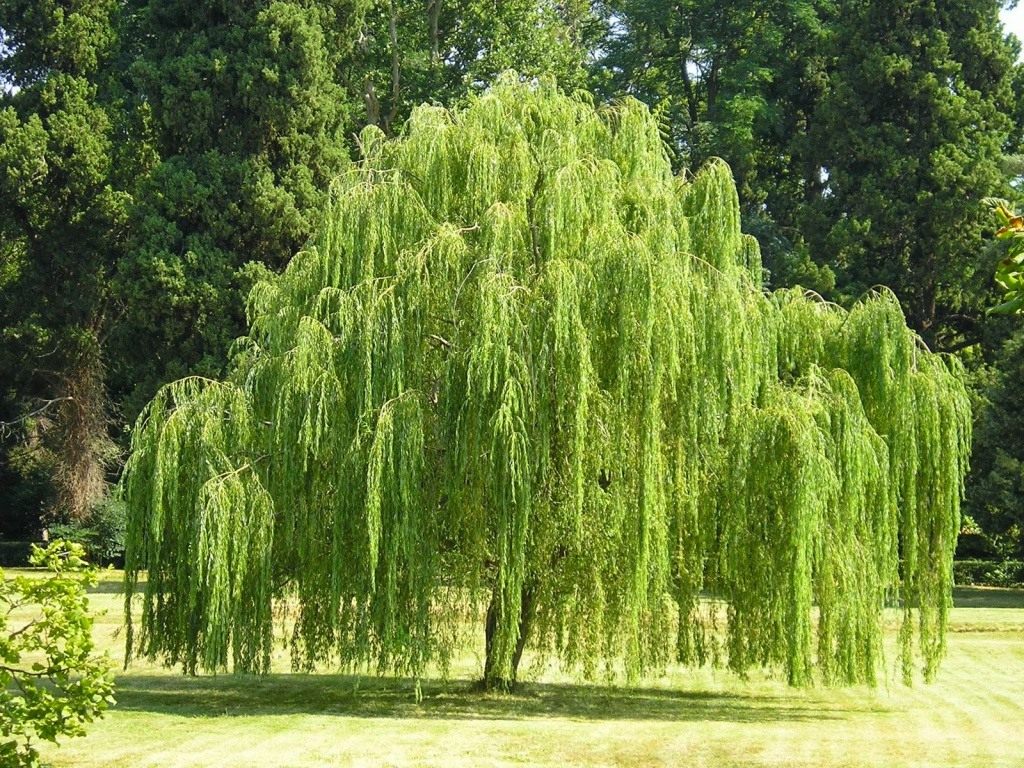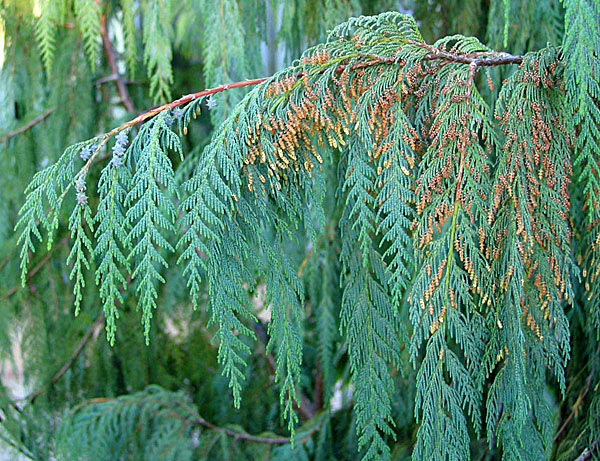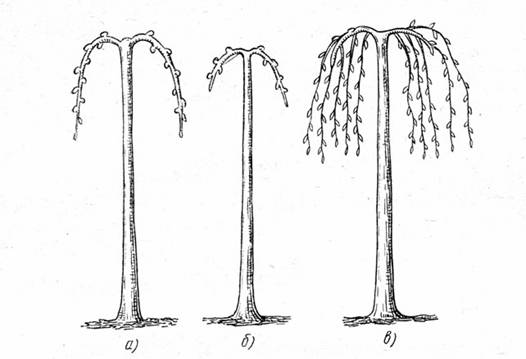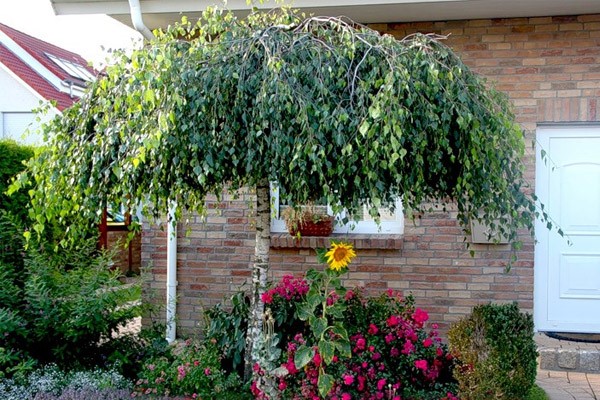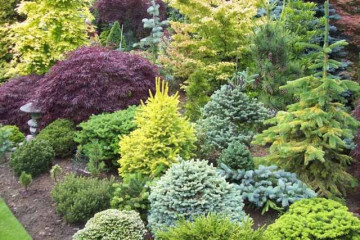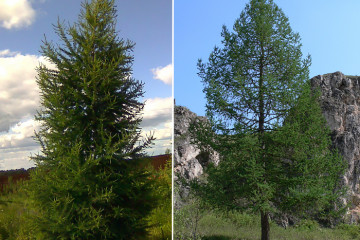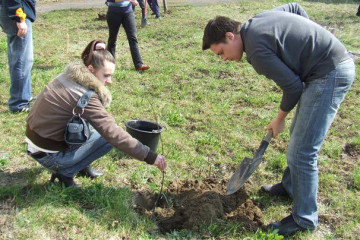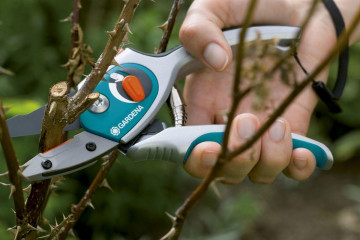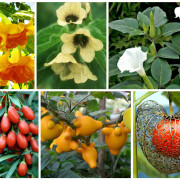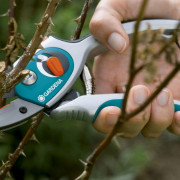Weeping larch and other weeping trees for the garden
Content:
Larch is one of the most common plants used in landscaping in Russia. She takes root well after transplantation. For many, the name of the plant is associated with a tall tree species, but there are others, for example, weeping larch.
Planting and caring for Pendula larch on a trunk
On the trunk, larch began to be used relatively recently for landscaping. In nurseries, buds are grafted onto a stem (1 to 2 meters high) so that they subsequently form an arc-shaped crown. The plant prefers to grow more on rocky ground, so they try to plant it in mountainous areas or create a drainage system using a large number of stones.
About landing
For planting larch, it is worth choosing a place where the soil will be loamy or sandy. She needs a well-moistened land, while she does not tolerate waterlogging. It is badly affected by the close location of groundwater - the root system of the plant penetrates deep into the soil, so excess moisture can lead to its decay. Due to the fact that the roots are in depth, the tree is not afraid of frosts and prolonged frosts.
The area for plant growth should be open and well lit. Saplings should be planted in the spring (the buds have not yet formed) or in the fall (when the leaves have fallen) at a distance of 2.5 to 3 m from each other.
It is worth considering the soil composition in which the plant grew. If the plant for landscaping was taken from a rocky area, the larch will need an alkaline composition of the soil mixture, if closer to swampy areas, it will be acidic. Prepare the substrate for planting, taking as a basis the soil familiar to the plant (2 parts), adding peat and humus to it (1 part each).
Landing technology:
- A hole is being prepared with a size of 60 (width) by 80 (depth) cm.
- Part of the substrate is placed in the base of the pit and spilled.
- The roots are immersed in the hole, carefully, holding the trunk, the plant is buried in.
- The soil around the tree is compacted and watered.
- So that moisture does not evaporate quickly, the near-trunk zone is mulched with sawdust, you can use peat.
About leaving
The near-trunk zone of the soil should always be loose and free of weeds. Therefore, it is necessary to carry out regular inspection of the planting. Weeding with loosening is required at least 2 times a year.
In the first 3 years after planting, it is worth doing regular spring-autumn feeding. It is better to introduce them during watering. Water the plants at least twice a week.
In the cold season, it is necessary to protect the plants, since they are less resistant to severe frosts. Mulch the near-trunk zone, wrap the crown and trunk.
Pruning larch on a trunk
Larch on a trunk requires annual pruning of branches. The plant grows very quickly in the first 20 years, it can add up to 20-40 cm per year, therefore, it requires the formation of a crown, setting the line of future growth. This should be done in early spring. Pruning of branches is also possible in autumn (after 5 years of age).During this period, old branches are shortened or weak branches are removed, this procedure stimulates the formation of new shoots. You also need to remove dried or damaged branches to ensure the healthy development of the plant.
Compositions with larch on a trunk
To create an interesting landscape, it is worth taking the time to select plants that will get along with larch. Several options for great weeping tree neighbors for the garden:
- Fern or stonecrop for a simple composition. The first is a spreading plant that covers the soil, the second, on the contrary, are erect, emphasizing the beauty of a weeping plant.
- For a blooming composition, a rhododendron with an azalea is suitable. Against the background of falling shoots, flowers of various shapes look colorful, which smoothly descend to the ground.
- The charming broomstick looks great against the background of Pendula, a variety with a delicate bluish tint. The uniqueness of the composition will be completed by a multi-colored astilba.
Not only flower beds can be decorated with these plants. It can be placed next to the gazebo. The shoots will gently hang over her, making her more comfortable.
Weeping trees for the garden
Weeping plantings began to be used in decoration many years ago. They can often be found in European style, as well as in the oriental direction of landscape design. Some weeping plantations were created by nature itself, some were bred by breeders. They fell in love with designers and gardeners for their winter hardiness.
Willow description
Willow is a deciduous plant. There are more than 600 types of it. Some of them have a shrub growth, some are tree-like.
The leaves of the willow are narrow and elongated. Their crown is flexible and transparent. Shoots are thin, slightly pointed. Most of the species do not exceed 15 meters in height, but there are several tree-like representatives that can grow up to 40 meters.
Many people still argue about whether a willow is a shrub or a tree? Most are inclined to think that there are 2 forms of growth. This plant is found everywhere. Willow looks great in single and composite plantings.
Shrub willow has gained wide popularity in the northern regions of Russia, as it easily tolerates harsh conditions. She is unpretentious, a frequent visitor to the fires, along the roads, and also on the coasts. It will grow wherever there is at least some (even a tiny) piece of land.
Weeping willow is a shrub or willow tree that has more than 300 varieties and varieties in its family. The weeping form of willows differs in that, in comparison with other representatives of the genus, it has a very transparent crown, which is formed from thin falling shoots. Willow dwarf trees are very often used to decorate rock gardens or organize hedges from shrub forms.
Weeping cypress
This is one of the most beautiful weeping conifers. Despite the fact that China is its homeland, it feels good in Russian conditions. It reaches a height of 20 to 40 meters. Scaly leaves are densely located on the falling thin shoots, they resemble branches of feta cheese from a distance. In addition to decorative foliage, cypress pleases with its interesting flowering, which takes place in the months of April-May.
Grafted plants are not new to gardening. This is how interesting tree species are created in nurseries. Weeping forms were created:
- Birches,
- Ash trees,
- Rowan berries.
The buds are grafted not upward, but downward. When the shoots begin to grow, they take on the appearance of an arc, gradually beginning to resemble a weeping willow, where the name of each of the trees came from.
Weeping rowan
An interesting plant with an irregular crown shape can add zest to landscaping. The size of the stem depends on the level at which the back-inoculation was done. Such a plant is very demanding on light, so you should choose an open place for planting or slightly shaded. You also need to take care of moisture - weeping mountain ash loves very much to keep the soil moist, but you should not overdo it.
Weeping ash
An excellent option for landscaping the lakeside area or playground for children. The crown resembles a large tent giving shade. After grafting, the shoots grow horizontally, later they begin to bend, going down to the ground. Formed at the tree crown in the shape of an umbrella. Prefers to grow in full sun or partial shade. Ash is especially undemanding to conditions, but it develops better on well-moistened soils.
Weeping birch
A tree with a weeping crown shape, whose branches descend to the very ground, looks picturesque in a single planting or creating a bright composition with a pond or near gazebos. Such a plant can be propagated thanks to the grafting, which is carried out directly in the upper part of the stem. After grafting, the plant should be given time to recover, in the spring (before the start of sap flow) it will be possible to transplant it. Prefers to grow in bright areas. The rest of the conditions are unpretentious.
Weeping shrubs
The weeping form can be created from many plants, most often breeders use trees for these purposes. But there are shrubs that look interesting with an unusual crown shape, for example, hawthorn. From slow-growing trees or dwarf plants, you can create an interesting planting for landscaping, which will resemble more a bush than a tree. Such a "bush" can be obtained from Japanese Sophora. It grows very slowly, the weeping shape of the branches creates a slightly elongated ball out of the tree, resembling a shrub.
Three forms of the crown of weeping trees
Many types of crowns are not natural, therefore, when trees propagate, their shape can be lost. When choosing seedlings in nurseries, it is worth considering this fact and buying plants that have already wintered at least once. They have already, in a sense, become winter-hardy. For weeping crowns, clear Latin names were invented for everyone.
Crohn's Pendula
The classic weeping form is pendula, pendulina or pendens. The branches, hanging down, create a delicate narrow silhouette of the planting. An artificially created crown can be observed near the mountain ash.
Crown Reflexa
A curved weeping form - reflexa - grows steeply downward. This is an openwork form of a weeping crown. Breeders love to use it when creating weeping forms of plants. Popular among them:
- Birch;
- Willow;
- Mulberry;
- Bird cherry;
- Beech.
Crown Inversa
Hanging (hanging) weeping form of the crown - inversa. Draws attention from others. It can be seen by the ash tree. In nurseries for the cultivation of weeping plantations, it is used to create the shape of the crowns in conifers.
Any weeping crown shape can be obtained, for this it is necessary to carry out the formation of each shoot, directing it in the right direction. Landscaping from compositions with plantings such as birch, mountain ash or weeping larch on a trunk will look interesting, adding zest to any site.
Video


